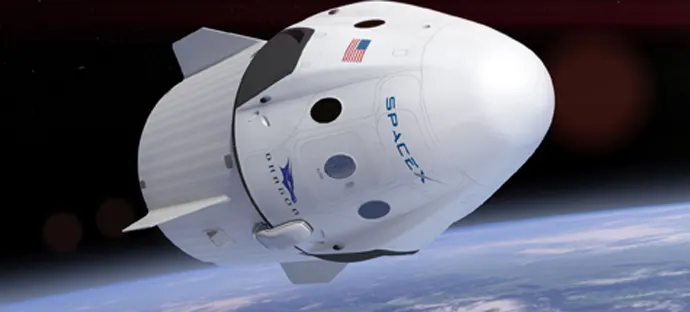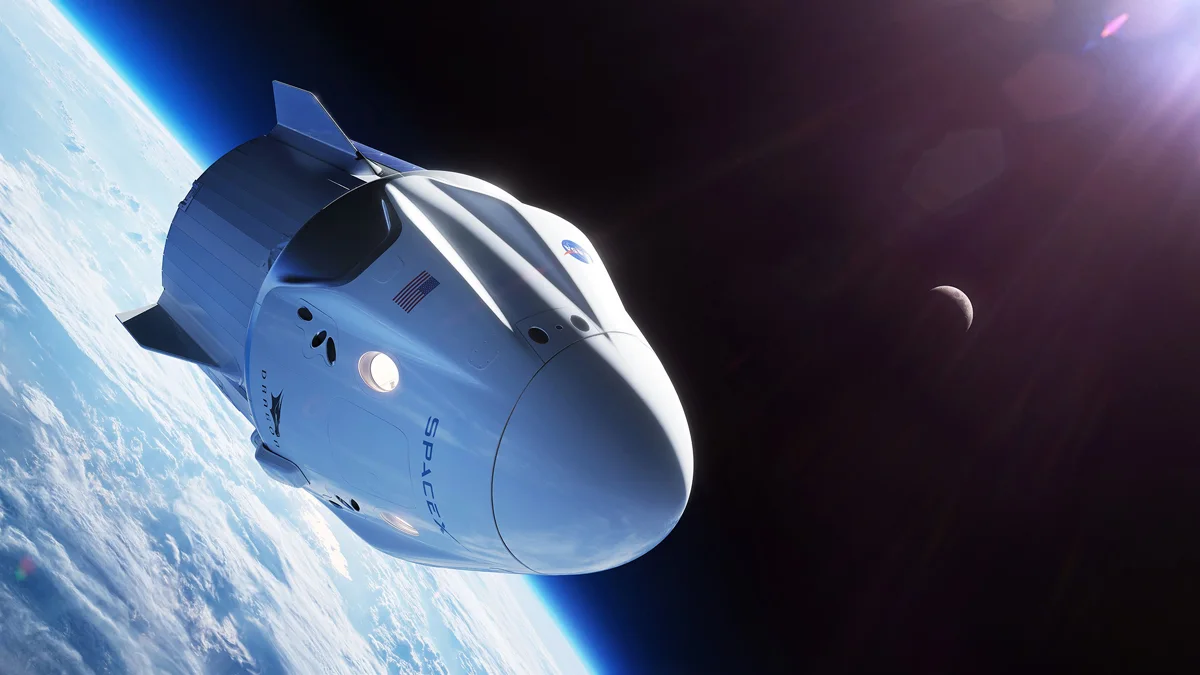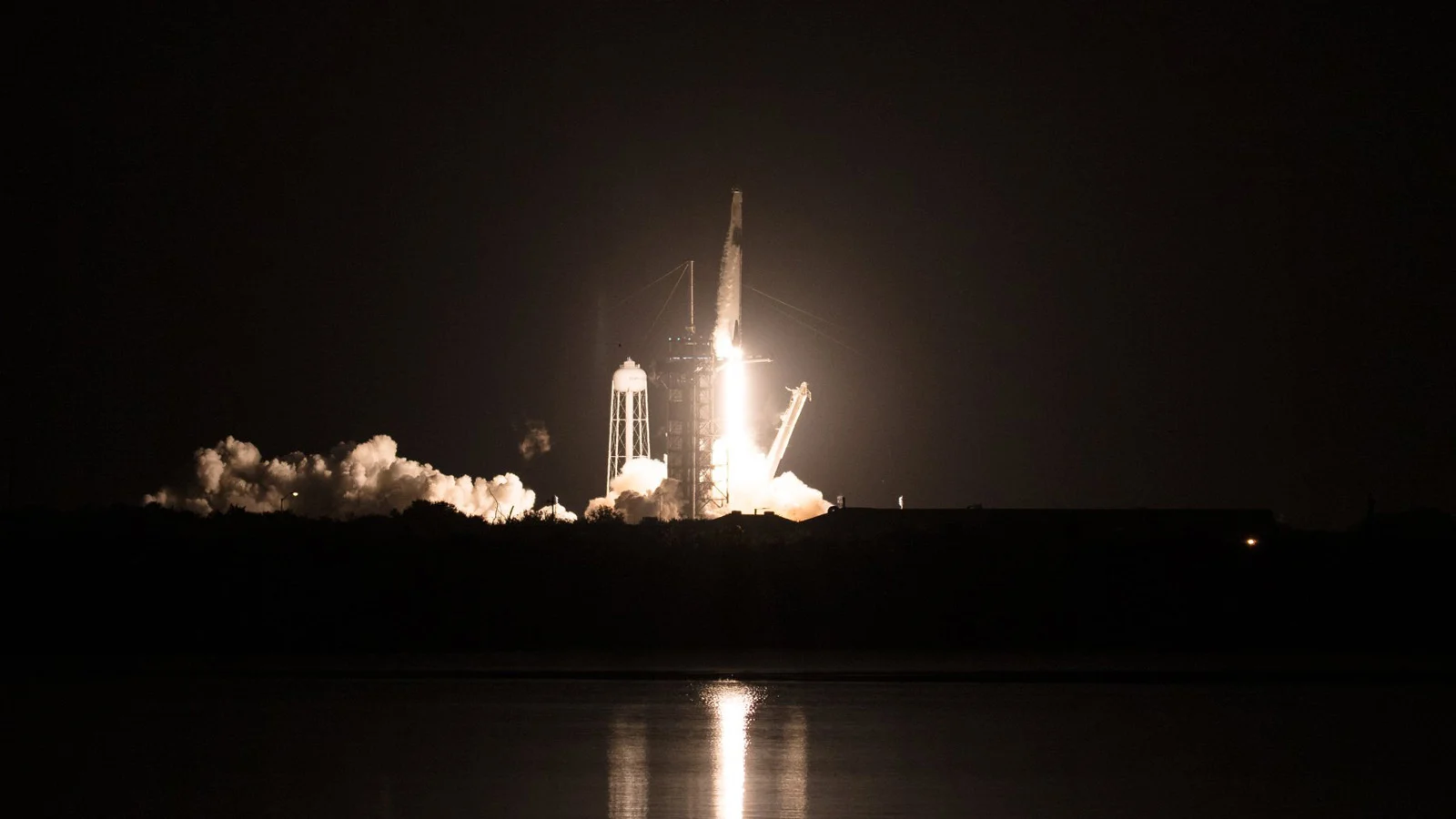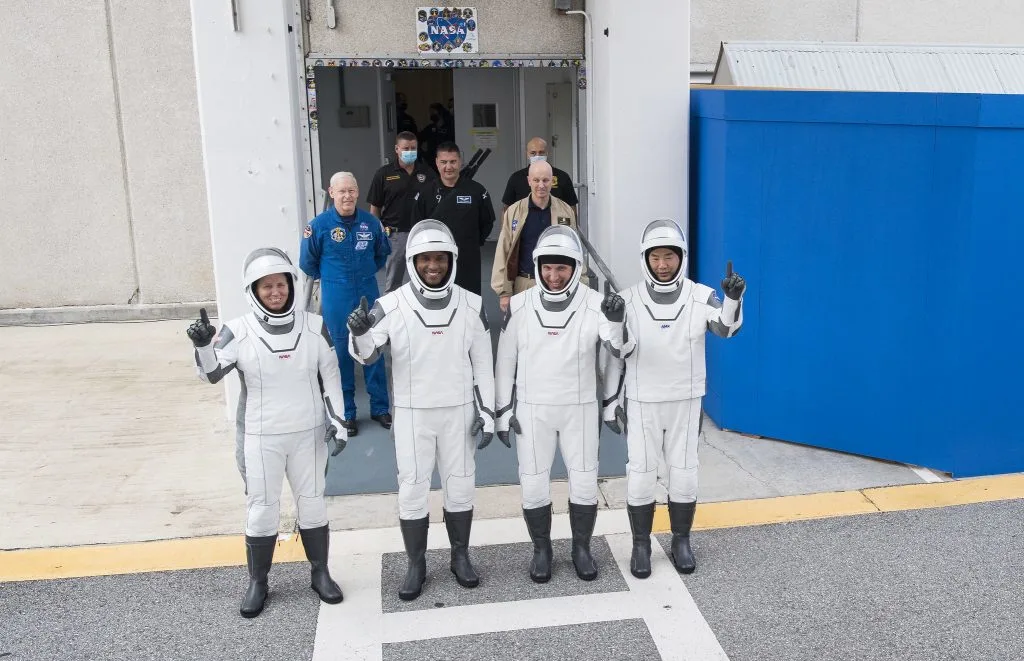
First SpaceX Commercial Crew mission on its way after flawless launch
It's official now. Astronauts are once again launching into space from American soil.

This simulated image shows the Crew Dragon spacecraft in orbit around Earth. Credit: SpaceX
After a flawless launch, four astronauts are headed for a Monday rendezvous with the International Space Station.
At 7:27 p.m. EST, on Sunday, November 15, 2020, SpaceX's Crew-1 mission — the first operational flight of their new Crew Dragon spacecraft — lifted off from NASA's Kennedy Space Center.

The Crew-1 Dragon spacecraft lifts off from Launch Complex 39A, atop a Falcon 9 booster rocket on November 15, 2020. Credit: NASA TV
On board the spacecraft:
Commander Michael Hopkins, NASA
Pilot Victor Glover, NASA
Mission Specialist Shannon Walker, NASA
Mission Specialist Soichi Noguchi, JAXA
NASA and SpaceX streamed the launch, live, starting at 3:15 p.m. EST on Sunday. Watch a replay of the SpaceX stream, below:
After an exected 8 hour and 30-minute flight into orbit, these four astronauts will then rendezvous with the Space Station, where they will join the Expedition 64 crew for a nearly 6-month stay on board the station.

The four members of the Crew-1 mission stand during a dress rehearsal on November 12, 2020. Left to right: NASA astronauts Shannon Walker, Victor Glover and Mike Hopkins, and Japan Aerospace Exploration Agency (JAXA) astronaut Soichi Noguchi. Credit: NASA/Joel Kowsky
COOPERATIVE WEATHER
The Crew-1 mission's launch was set for 7:27 p.m. EST on Sunday, but it was initially scheduled for 7:49 p.m. EST on Saturday. Late Friday afternoon, the mission team decided to delay the launch by a day due to the expected weather conditions during Saturday's launch window.
According to NASA's Commercial Crew Program blog, "NASA and SpaceX agreed to target launch for 7:27 p.m. EST Sunday, Nov. 15, due to onshore winds and first stage booster recovery readiness."
Basically, the winds were expected to make a Saturday launch more difficult, and the water surface conditions out on the Atlantic would have made recovery of the Falcon 9 first stage more treacherous.

Significant cumulus clouds gather near Kennedy Space Center in this photo from November 11, 2020. Similar conditions leading up to the launch window could force them to abort. Credit: NASA/Joel Kowsky
As of Sunday, The U.S. Air Force 45th Weather Squadron gave only 50/50 chance for favourable conditions during the launch window. Their primary concerns were "cumulus clouds and associated precipitation, along with electric fields from any more robust showers." Additionally, they were watching that weather conditions remained favourable in the mission's various 'abort' regions — where the capsule could splash down, if they were forced to separate from the rocket and end the mission early.
This Day in Weather History: November 14, 1969 - Apollo 12 struck by lightning
Good weather is crucial for a space launch. Just over 51 years ago, the Apollo 12 mission suffered two lightning strikes on the rocket that almost ended their flight to the Moon.
These days, NASA follows strict guidelines for weather conditions leading up to a space launch.

Several Lightning Launch Commit Criteria (LLCC) are considered for a launch weather forecast. These are all conditions in the vicinity of the launch platform that indicate lightning-producing storms or conditions favourable for the rocket launch to trigger a lightning strike. Credit: U.S. Space Force 45th Weather Squadron










